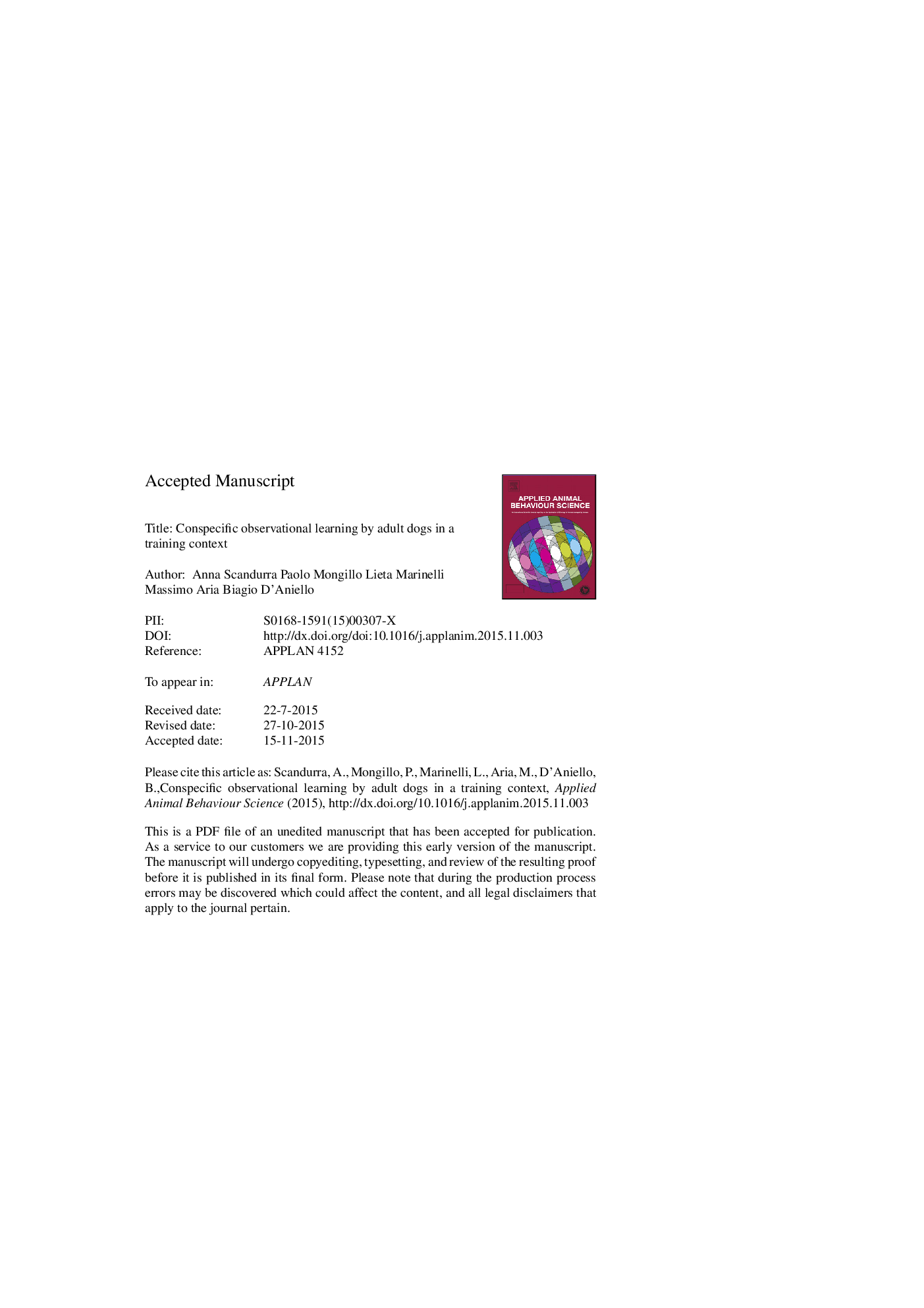| Article ID | Journal | Published Year | Pages | File Type |
|---|---|---|---|---|
| 6379372 | Applied Animal Behaviour Science | 2016 | 19 Pages |
Abstract
The experimental procedure consisted of two phases: Phase 1, intended to ascertain that dogs could not perform the selected exercise when requested by their handlers; Phase 2, to assess whether they would perform the same exercise after the observation of a conspecific demonstrator. The tests were performed outdoors in a fenced training area and one out of two dynamic exercises were selected for each dog: jumping on a trunk or hop on a slide for children. The outcome of Phase 2 was coded into a binary variable as successful or unsuccessful and a generalized linear model with binary logistic link function was used to analyze outcomes. The model included the dog's age as a covariate and the experimental group, level of experience, sex and all two-ways interactions as fixed factors. The dogs' probability to replicate the action increased significantly after demonstration by a conspecific compared to a control group and such probability improves with age. This study supports the usefulness of the intraspecific observational learning in adult dogs for training purposes.
Keywords
Related Topics
Life Sciences
Agricultural and Biological Sciences
Animal Science and Zoology
Authors
Anna Scandurra, Paolo Mongillo, Lieta Marinelli, Massimo Aria, Biagio D'Aniello,
